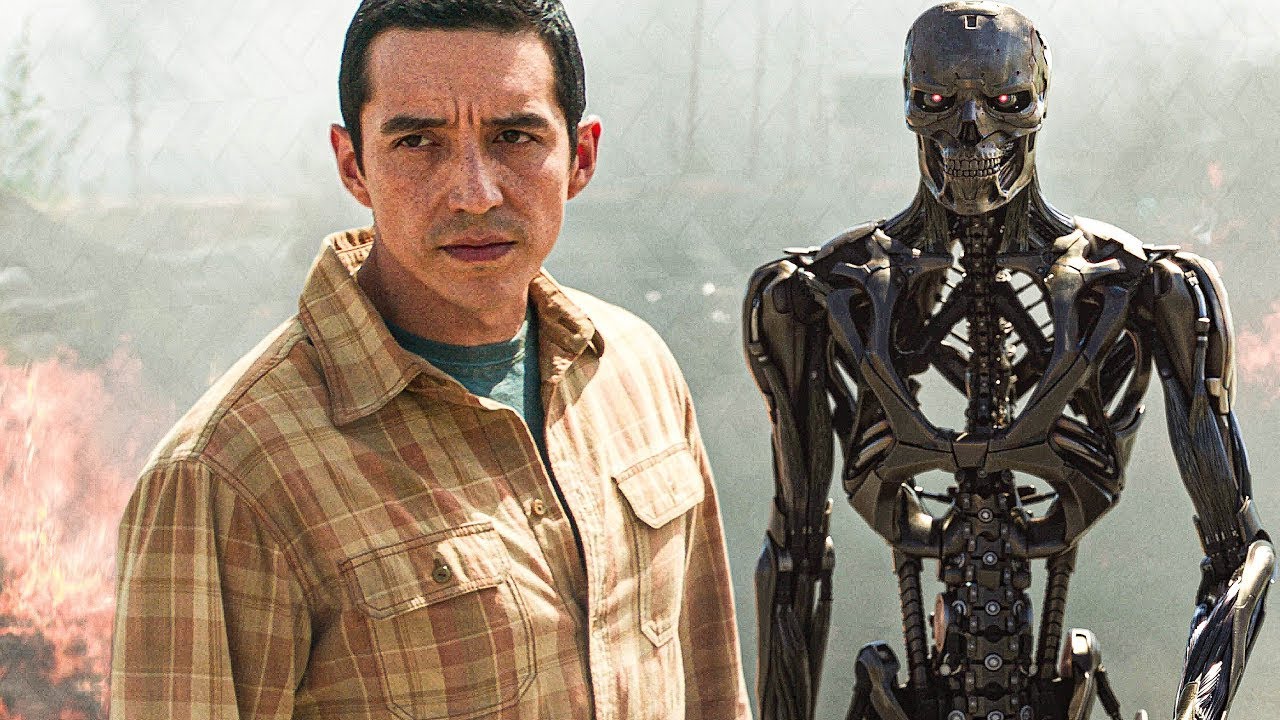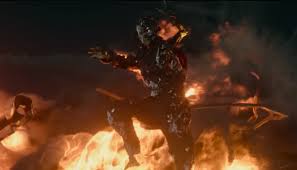🎬 Terminator: Dark Fate (2019)

Introduction and Narrative Overview
Terminator: Dark Fate, released on November 1, 2019, serves as a direct sequel to Terminator 2: Judgment Day (1991), effectively erasing the events of the subsequent three films in the franchise. Directed by Tim Miller and produced by James Cameron, who co-wrote the story with David S. Goyer and Justin Rhodes, this sixth installment aims to recapture the gritty, high-stakes essence of the original duology. The screenplay, penned by Goyer, Rhodes, and Billy Ray, introduces a new future war led by an AI called Legion, replacing Skynet, while reintroducing iconic characters Sarah Connor (Linda Hamilton) and the T-800 (Arnold Schwarzenegger) alongside fresh faces like Dani Ramos (Natalia Reyes) and Grace (Mackenzie Davis), an enhanced human soldier.
The plot kicks off in Mexico City, where Dani, a factory worker, becomes the target of a Rev-9 (Gabriel Luna), a liquid-metal-and-endoskeleton hybrid Terminator sent by Legion to eliminate her before she can lead humanity’s resistance. Grace, dispatched from 2042, protects Dani, and the duo soon crosses paths with a hardened Sarah Connor, who’s been hunting Terminators since Judgment Day was averted. The trio’s mission to survive escalates when they enlist a reformed T-800—now living incognito as “Carl”—who offers aid after decades of grappling with his past actions. The narrative barrels through chases across highways, borders, and skies, culminating in a dam showdown that tests their resolve. While it echoes T2’s structure, Dark Fate struggles to justify its existence beyond nostalgia, offering a familiar yet uneven reboot.
The film’s strength lies in its attempt to refresh the franchise with a female-led resistance, spotlighting Dani as a reluctant savior. However, its reliance on recycled beats—another chase, another AI apocalypse—undermines its bold swings. Legion’s vague menace lacks Skynet’s chilling clarity, and the pacing falters under exposition dumps. Still, Dark Fate delivers visceral thrills and a poignant nod to the Connor legacy, making it a flawed but earnest return to form for a series long adrift.
Performances and Character Dynamics
The cast of Terminator: Dark Fate is its beating heart, with Linda Hamilton’s Sarah Connor anchoring the film in raw, weathered gravitas. Returning after 28 years, Hamilton embodies a Sarah who’s evolved from protective mother to grizzled loner, her every line dripping with cynicism and pain. Her interplay with Schwarzenegger’s T-800, now a domesticated relic with a conscience, is the emotional core. Schwarzenegger blends stoic humor—“I’m very funny,” Carl deadpans—with surprising pathos, reflecting on his role in killing John Connor post-T2. Their reunion carries the weight of the franchise’s history, offering closure that resonates despite the retcons.
Mackenzie Davis shines as Grace, a cybernetically enhanced soldier whose fierce loyalty to Dani and physicality—scarred yet relentless—add a new dimension to the Terminator protector archetype. Her dynamic with Natalia Reyes’s Dani starts shaky, as Reyes struggles to match the intensity of her co-stars early on, but grows into a quiet strength by the climax. Gabriel Luna’s Rev-9 is a technically impressive villain, splitting into dual forms with eerie precision, though he lacks the menace of Robert Patrick’s T-1000. The ensemble clicks best in action, less so in quieter moments, where clunky dialogue hampers chemistry.
The triangular bond between Sarah, Grace, and Dani aims to pass the torch, with Sarah’s mentorship clashing against Grace’s urgency and Dani’s naivety. It’s a compelling setup, but the script doesn’t fully explore their emotional stakes, prioritizing spectacle over depth. Schwarzenegger’s Carl, meanwhile, provides a bittersweet counterpoint, his redemption arc offering fans a farewell that’s both absurd and touching. The performances elevate a middling story, though the crowded cast occasionally dilutes focus, leaving supporting players like Diego Boneta’s Diego underused.
Visuals, Action, and Technical Craft
Visually, Terminator: Dark Fate is a technical marvel, leaning hard into practical stunts and CGI to recreate the franchise’s signature chaos. Tim Miller, fresh off Deadpool, directs with a kinetic eye, staging set pieces like a highway chase—complete with a truck plow and spiraling Humvees—that rival T2’s tanker pursuit. The Rev-9’s dual nature shines in a factory brawl, where its liquid-metal shell detaches to fight independently, a seamless blend of effects overseen by Industrial Light & Magic. The climactic dam battle, with its flooding turbines and fiery explosions, is a visceral payoff, though it can’t top T2’s steel mill iconicism.
Cinematographer Ken Seng bathes the film in a dusty, sun-bleached palette, contrasting the neon-drenched future glimpses of Legion’s war. Junkie XL’s score pulses with industrial beats, echoing Brad Fiedel’s classic themes without over-relying on them. The production design—rusted scrapyards, militarized borders—grounds the sci-fi in a tangible now, while Grace’s cybernetic enhancements are rendered with gruesome detail. Yet, the relentless action pacing leaves little room for the eerie stillness that defined Cameron’s originals, and some CGI, like a wobbly plane crash, feels rushed.
The film’s $185 million budget shows in its polish, but it’s not flawless. Overuse of digital doubles in crowd scenes jars, and the future war flashes lack the haunting weight of T1’s nightmares. Still, Dark Fate delivers blockbuster spectacle that honors the franchise’s roots, proving Miller’s knack for chaos. It’s a visual feast that occasionally sacrifices substance for style, but when it hits—like Grace’s brutal hand-to-hand combat—it’s pure Terminator adrenaline.
Themes, Reception, and Franchise Impact
Thematically, Terminator: Dark Fate wrestles with fate, sacrifice, and the cyclical nature of resistance. Dani’s rise mirrors John Connor’s, questioning whether destiny is earned or imposed, while Sarah’s arc confronts the cost of survival. Grace’s self-sacrificing augmentation and Carl’s atonement deepen these threads, suggesting humanity’s strength lies in choice, not inevitability. Yet, the film’s grim tone—killing John in the opening minutes—alienates some fans, and Legion’s generic threat dilutes the AI dread Skynet mastered. It’s a meditation on legacy that stumbles under its own weight.
Reception was mixed, earning a 70% on Rotten Tomatoes but a polarizing 6.2/10 on IMDb. Critics praised Hamilton and the action, calling it a return to form after Genisys, yet faulted its repetitive plot and lack of innovation. Audiences split over John’s death and the reboot approach, contributing to a disappointing $261 million box office against its hefty cost—a financial flop that stalled sequel plans. As of February 28, 2025, it’s remembered as a noble misfire, a bridge between old and new that didn’t fully cross.
For the franchise, Dark Fate was a reset that didn’t stick, leaving its future uncertain. Cameron’s involvement lent credibility, but the lack of a bold vision beyond nostalgia stalled momentum. It’s a testament to the enduring pull of Sarah and the T-800, yet a cautionary tale of reboot fatigue. While not the revival hoped for, it’s a gritty, flawed chapter that still packs a punch for diehards.














